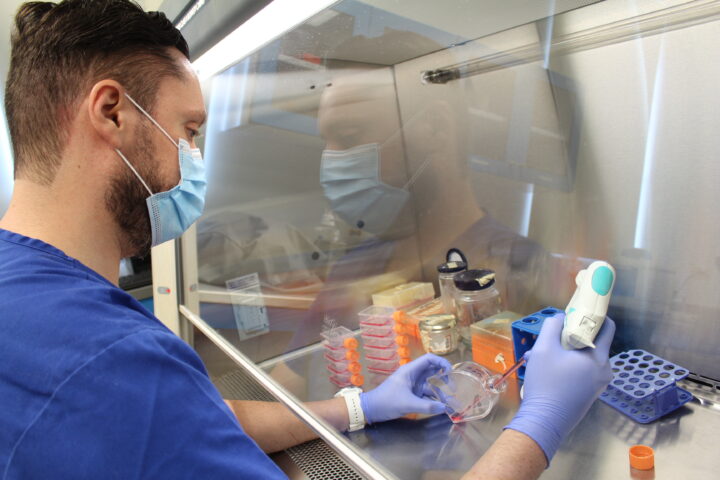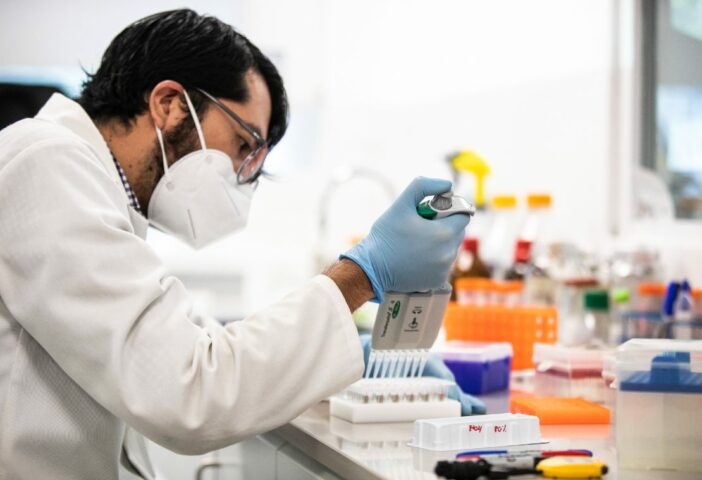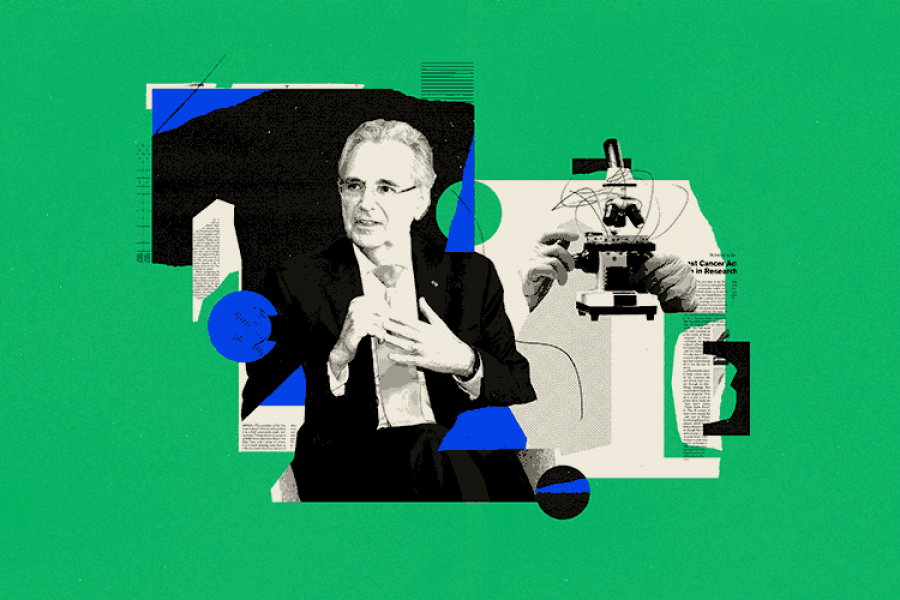Juan Carlos Betancourt had been running for just a few minutes when the band on his left wrist started vibrating. It was his first time using a wearable device, and he was surprised at how quickly he reached his first kilometer out of six.
“I was used to running free, without a phone or a watch, and then the trend of sharing your activity on social media took off, which is how I ended up with this band. It was helpful that it notified me every kilometer, along with my pace and time. I felt like I wasn’t running blindly anymore,” says Betancourt, a triathlon athlete and coach who has competed in 28 marathons, 10 ultramarathons, and three Ironman triathlons.
According to experts, wearable technology has significantly impacted people’s health behaviors, and its popularity continues to rise. It is projected to experience widespread adoption, with a growth rate of 55% over the next five years.
The range of wearables includes watches, bracelets, bands, tattoos, and other intelligent garments equipped with batteries, sensors, microchips, and communication systems to connect to the Internet and link with digital apps that process, analyze, and organize data for users to review.
Goals and Self-Monitoring: Key Behavioral Changes
Wearable technology has gained significant traction within the athletic community where Juan Carlos operates, reflecting a trend of increasing reliance on apps and tech tools to adopt healthier lifestyles based on real-time data.
“Everyone I know now has some device to measure something, even sleep. Depending on your activity, it tracks the hours of sleep and recovery you should get,” he notes about his observed self-monitoring habits.
Carolina del Valle, a researcher at the Universidad Panamericana, and her colleagues conducted a global study examining the impact of wearables on behavior. The study focuses on eight behavioral change techniques: goal setting, personalization, gamification, behavior self-monitoring, induction, social support, self-appraisal, and provision of instructions.
Initially, the research team conducted a statistical analysis across five continents to identify global trends and patterns in wearable adoption. They then studied behavioral changes in 30 users who engaged in activities related to these techniques for two weeks, measuring their vital signs three times a day and conducting satisfaction surveys.
“We analyzed how some apps users find on their devices, with repeated daily use, can foster behavior changes. We discovered a fascinating intersection between technology and psychology,” says del Valle, who also holds a PhD in Information and Communication Technologies from Tecnológico de Monterrey.
The results highlight that the most notable benefits for users included Quality of life improvement, Data analytics, and Transparency for the user. Some behavioral change techniques, however, were not perceived by users as directly attributable to the wearables.
“Wearables encourage positive behavior changes by delivering immediate feedback, tailored recommendations, and gamified experiences, leading to sustained improvements in health,” the study explains.
However, a significant downside identified was concerns regarding privacy, security, and Technological dependency.
Wearable Data Proves Valuable for Users
Juan Carlos relies on his wearables during each competition to gain insights that enhance his performance. For example, a chest strap provides precise data on his hydration and energy levels throughout his run. “I believe that ‘what isn’t measured, can’t be improved,’” he asserts.
“The strap allows me to know things I couldn’t before, such as needing 60 grams of carbohydrates and 750 milliliters of water per hour between certain distances, or if I have the lung capacity to go faster,” the athlete explains.
Juan Arturo Nolazco, Director of the Data Science Hub at Tecnológico de Monterrey and a contributor to the study, emphasizes the importance of wearables’ information and how programs and apps deliver this data to users through alerts and feedback, even during periods of physical inactivity.
The study found that Goal setting was the most effective behavior change technique for promoting well-being, both in terms of user perception and its impact on vital signs.
“For instance, if you set goals, there are apps that can provide personalized notifications or feedback about your progress, saying things like ‘hey, you’re falling short’ or ‘you can do it’. It’s like having someone looking after you; this can become a habit over time, but initially, it serves more as support,” Nolazco comments.
Today, wearables boast advanced data processing capabilities with biometric applications, leading to high demand in the healthcare sector. Over 80% of global consumers are now willing to use devices for health monitoring.
The Potential of Wearables in Healthcare
In health, Juan Carlos has observed the growing use of wearables as a preventative tool. People are becoming more health-conscious, tracking their vital signs to detect irregularities early and receiving alerts that suggest when it might be necessary to consult a physician for further evaluation.
Tania Zertuche, Director of Comprehensive Wellness and Prevention at TecSalud, highlights how patients can share data from their wearables with their doctors for more precise treatments.
“Technology has evolved to uncover increasingly useful data for health management. For example, a patient might report that their sleep quality is fine. Still, by examining the wearable data, we might discover that they are experiencing micro-awakenings or very light sleep,” says Zertuche, who also leads the Health4Life program at TecSalud.
She notes that with the volume and type of information provided by wearables, medical teams can access statistics and gain a better understanding of their patients—even during telemedicine sessions—enhancing effectiveness without the need for in-person visits.
Zertuche explains that wellness programs within organizations that promote healthier habits can also benefit from wearables. For instance, TecSalud’s “One Step at a Time” campaign involves employees, doctors, professors, and residents forming teams of five to participate in challenges that aim to accumulate the most steps.
“It has yielded excellent results because people start moving more and feel a sense of community. The benefits extend beyond just exercise to enjoy the activation experience and social interaction,” Zertuche adds.
Potential Downsides: Anxiety from Data Overload
On the flip side, it’s important to acknowledge that the use of these devices can sometimes induce anxiety, with some patients opting to avoid certain information altogether. Additionally, there can be a tendency to become obsessed with achieving goals or experience stress when targets seem distant or unattainable. In such cases, it’s advisable to set different goals or reassess existing ones to make them more achievable.
Carolina del Valle concludes that wearable technology undeniably impacts people’s lives. “We’re constantly surrounded by seven to eight devices connected to the internet throughout the day. We’re creating a ‘personal area network’. We’re more connected than ever; the Internet of Everything is real, and with the Internet of People and the Internet of Things, we are just one more connection in these smart environments.”
Interested in this story? Want to publish it? Contact our content editor to learn more: marianaleonm@tec.mx


















